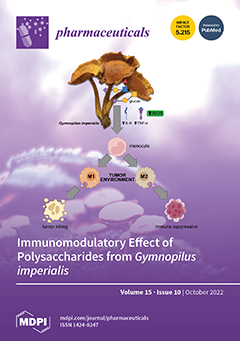Microbial resistance has become a worrying problem in recent decades after the abusive use of antibiotics causing the selection of resistant microorganisms. In order to circumvent such resistance, researchers have invested efforts in the search for promising natural substances, such as essential oils. Thus, the objective of this work was to determine the chemical composition of the essential oil of
Acritopappus confertus leaves, to evaluate its intrinsic effect and its effects in combination with drugs against pathogenic fungi and bacteria, in addition to verifying the inhibition of virulence in
Candida strains. To this end, the oil was verified by gas chromatography coupled with mass spectrometry (GC/MS).
Candida strains were used for antifungal assays by means of the serial microdilution technique, in order to determine the average inhibitory concentration (IC
50), and for the modification assays, sub-inhibitory concentrations (MIC/8) were used. Finally, the natural product’s ability to inhibit the formation of filamentous structures was evaluated. In antibacterial tests, the MIC of the oil against strains of
Staphylococcus aureus and
Escherichia coli and its modifying effects in association with gentamicin, erythromycin, and norfloxacin were determined. The major constituent of the essential oil was the monoterpene myrcene (54.71%). The results show that the essential oil has an antifungal effect, with
C. albicans strains being the most susceptible. Furthermore, the oil can potentiate the effect of fluconazole against strains of
C. tropicalis and
C. albicans. Regarding its effect on micromorphology, the oil was also able to inhibit the filaments in all strains. In combination with antibiotics, the oil potentiated the drug’s action by reducing the MIC against
E. coli and
S. aureus. It can be concluded that the essential oil of
A. confertus has potential against pathogenic fungi and bacteria, making it a target for the development of an antimicrobial drug.
Full article






